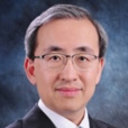Stem cell-based approaches for intervertebral disc regeneration.
Słowa kluczowe
Abstrakcyjny
Degeneration of the intervertebral disc is an age-related progressive process considered to be the major cause of a series of spine disorders, such as low-back pain that affects the majority of adult population and causes a huge loss of time from work and medical expenses. Numerous regenerative approaches are being developed with the aim to halt or reverse degeneration, including intradiscal administration of nucleus pulposus cells and mesenchymal stem cells and anabolic growth factors. Each of the currently proposed approaches, however, has exhibited certain limitations or shortcomings, largely due to our limited understanding on the cell biology, turnover mechanisms of the intervertebral disc as well as the etiology of disc degeneration. Intervertebral disc, particularly the central nucleus pulposus, is the largest enclosed and avascular tissue in the body and owes a microenvironment under high mechanical and osmotic pressures, at severely hypoxia, and with very limited nutrient supply. In order to achieve an optimal outcome of new regenerative therapies in such a harsh circumstance, identifying and characterizing endogenous regenerative properties of normal and degenerate intervertebral disc, including stem/progenitor cells themselves and extracellular factors located within the stem cell niche, may provide effective insights into selecting the most suitable cell sources and improving or rebuilding the microenvironment favorable for endogenous or transplanted stem cells.



